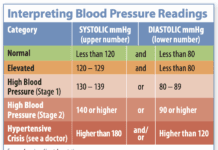
Earlier this year, the federal government released the new Dietary Guidelines for Americans (DGAs). (See our March Special Report.)
As a cardiologist, public-health advocate and nutrition scientist, I see a lot of good in the DGAs.
First, the DGAs emphasize healthful eating patterns and foods. This is an advance over past guidelines, which focused more on isolated nutrient targets. Modern nutrition science tells us that, for preventing major diseases like obesity, diabetes, heart disease and cancers, it’s all about food choices and overall diet patterns, not single nutrients.
Second, the DGAs state that all segments of society have a role to play in supporting healthy choices. In other words, it’s not just about personal willpower, education or food labeling: Everyone needs to pitch in, including the healthcare system, food industry, local and national governments, community organizations, religious groups and corporate America. While cynics might dismiss this as fancy speech-making, at least the government is saying, officially, that the burden of healthy eating cannot fall only on the consumer.
Third, the DGAs make a clear, up-front declaration: “All food and beverage choices matter.” This could seem a minor point. But it actually represents a pretty strong antidote to the notion that we can overlook unhealthy choices, that eating junk is no big deal, that all we need to do is eat “everything in moderation.” This last questionable concept, strongly supported by the food industry, would have us believe that all the junk in the food supply fits in somewhere. (See the February newsletter.)
The idea that all choices matter is a cornerstone of public health. People and populations gain or lose health not by isolated, extravagant actions, but by gradual accumulation of small, daily choices and actions. Think of your health as a long-term savings account. You can try to win the lottery and get rich quick, but a better approach is slow, steady savings over your lifetime.
Few parents I know would purposefully remove their own seatbelts, or take their children out of car seats, once a week or once a day. While the risk associated with these single acts is tiny, it adds up, over months to years, into large and entirely preventable risk. Yet, these same folks will eat a hot dog, donut, soda, flavored chip or sugary cereal, or feed these to their kids, like it’s no big deal. The risk associated with any of these actions is arguably larger than removing one’s seatbelt for a drive. Don’t do it, or at least do it with eyes wide open. Kudus to the 2015 DGAs: All food and beverage choices matter.
INCONSISTENT, CONTRADICTORY: Now, the bad. Several aspects of the DGAs are inconsistent or contradictory. First, while the DGAs appropriately omit any specific limit on total fat (a strongly evidence-based improvement), much of the specific guidance around foods remains highly fat-phobic.
For example (and we’ll put aside, for now, the emphasis on low-fat dairy, lean meats and even lean poultry – heaven forbid someone ask for dark meat at Thanksgiving), the DGAs correctly recommend more vegetable oils in the diet, but also inexplicably warn, “they are a concentrated source of calories,” “the amount consumed should be within the [old dietary limits] for total fats,” and “oils should replace solid fats rather than being added to the diet.”
On nuts, the DGAs warn, “because they are high in calories, they should be eaten in small portions and used to replace other protein foods rather than being added to the diet.” Long-term cohorts and controlled trials have disproven the idea that fat makes one fat, or that nuts or vegetable oils cause obesity, while showing that vegetable oils and nuts reduce heart disease and diabetes. Healthy foods are healthy – high fat or no fat – no caveats needed.
Next, while the scientists advising the DGAs concluded that saturated fat is no different than total carbohydrate for heart disease, both they and the 2015 DGAs remain heavily focused on reducing saturated fat. Judging a food or diet by its saturated fat content is not very useful, can be manipulated by industry, and is inconsistent with the appropriate new emphasis on foods and diet patterns. The saturated fat focus, a relic from the past, should have been put to rest.
Third, the DGAs say that healthy foods and diet patterns are crucial, yet simultaneously recommend “variety” and eating in an “adaptable framework” that meets one’s personal and cultural “preferences.” Such guidance sounds positive, yet in practice can easily be translated as “eat a bit of everything, including the bad stuff” – and this indeed is where the DGAs go. What happened to “all food and beverage choices matter”?
BEHIND THE GUIDELINES:
It’s important to know how the Dietary Guidelines for Americans are created. First, an expert panel of independent scientists performs a detailed, public review of the latest nutrition science, which they summarize as formal, public recommendations to the government, including clear descriptions of the rationale and evidence underlying each recommendation. Second, the government takes these public, annotated scientific recommendations; considers other public and private viewpoints, including from industry; and then – behind closed doors and with no transparency – writes the final DGAs. Not surprisingly, a lot can happen between the objective scientific report <health.gov/dietaryguidelines/2015-scientific-report/PDFs/Scientific-Report-of-the-2015-Dietary-Guidelines-Advisory-Committee.pdf>, which was largely outstanding, and the final DGAs <health.gov/dietaryguidelines/2015/guidelines>.—DM

GUIDELINES BREAKDOWNS: And, now, we arrive at the ugly. The first major breakdown in the DGAs is the obvious fear and inability to recommend reduced intake of almost any food. (The DGAs appear more comfortable with limits on specific nutrients, such as sodium or added sugar: Such limits do not target any food specifically, allowing food companies to market any product under the assumption that the rest of the diet is OK – which of course it is not.)
The scientists advising the DGAs made strong, explicit recommendations that Americans should eat less of two major food groups: red and processed meats, and refined grains. The harms of these foods, and the need to reduce them, was a major focus. Notably, the scientific panel only advised sensible reductions – not elimination – of meats and refined grains; they did not say that all Americans should become vegans, or eat only quinoa. Yet, the final DGAs ignore (for meats) or hide (for refined grains) this strong, sound advice. Indeed, the DGAs actually recommend red meat “for balance and flexibility,” and go out of their way to specify that processed meats and processed poultry “can be accommodated” in the diet. Regrettably, on both meats and refined grains, the DGAs sacrifice the health of Americans for the benefit of the US and multinational food industry.
The second major failure is the deletion of specific recommended policies to improve the US diet. The scientific advisory panel to the DGAs generated an outstanding list <health.gov/dietaryguidelines/2015-scientific-report/04-integration.asp> of clear, effective, evidence-based measures that would transform the US food supply. These included, for example, specific pricing policies (taxes, subsidies), quality standards (e.g., trans fat, sodium), marketing restrictions (e.g., to children), and standards for federal feeding programs (e.g. SNAP). Yet, none of these recommendations survived in the final DGAs, which greatly watered down these evidence-based – but industry-unfriendly – policy actions and replaced them with broad, toothless generalizations about “greater access to healthy choices” and more “education and promotional activities.” This is a shame. Including the explicitly advised, scientifically sound policy recommendations could have made this the best DGAs ever.
WHAT NOW?: So, the 2015 DGAs contain good, bad and ugly. Where does this leave Americans and our diets? We each have an opportunity and responsibility – as parents, children, friends, neighbors, business owners, employees, taxpayers, citizens and Americans – to push the government, food industry, media, restaurants, cafes, schools and workplaces, and everywhere else we eat, away from the bad and ugly and toward the good.
We must influence what is emphasized during the implementation of the DGAs, for example as polices and actions in education programs, food labeling, schools, worksites, national feeding programs, and industry and restaurant food formulations. We should also demand a change to how the 2020 DGAs are finalized, so that the government process of writing the final guidelines is just as open and transparent as the scientific advisory report that informs it. Where our country and our diets go from here is now up to us.
(A version of this editorial previously appeared on the Huffington Post website.)
TO LEARN MORE: Circulation, January 12, 2016 –
http://circ.ahajournals.org/content/133/2/187
In a recent review of the scientific evidence published in Circulation almost simultaneously with the release of the 2015 Dietary Guidelines for Americans, Dr. Mozaffarian identified these dietary priorities for cardiovascular and metabolic health:
Consume MORE –
– Fruits (3 servings/day)
– Nuts, seeds (4 servings/week)
– Vegetables, including legumes, excluding russet or white potatoes (3 servings/day)
– Whole grains (3 servings/day, in place of refined grains)
– Fish, shellfish (at least 2 servings/week)
– Dairy products (2-3 servings/day)
– Vegetable oils (2-6 servings/day)
Consume LESS –
– Refined grains, starches, added sugars (no more than 1-2 servings/day)
– Processed meats (no more than 1 serving/week)
– Unprocessed red meats (no more than 1-2 servings/week)
– Industrial trans fat (none)
– Sugar-sweetened beverages (none)
– Sodium (no more than 2,000 mg/day)
Generally, one “serving” is a half-cup of fruits, vegetables or grains; one cup of leafy vegetables, cereal, milk or yogurt; one slice of bread; one ounce of nuts; one teaspoon of oil; 3.5 ounces of meat, fish or poultry; 1.75 ounces of processed meat.
He also recommends:
– Regular physical activity
– No smoking
– Get enough sleep (7-plus hours/night)





















